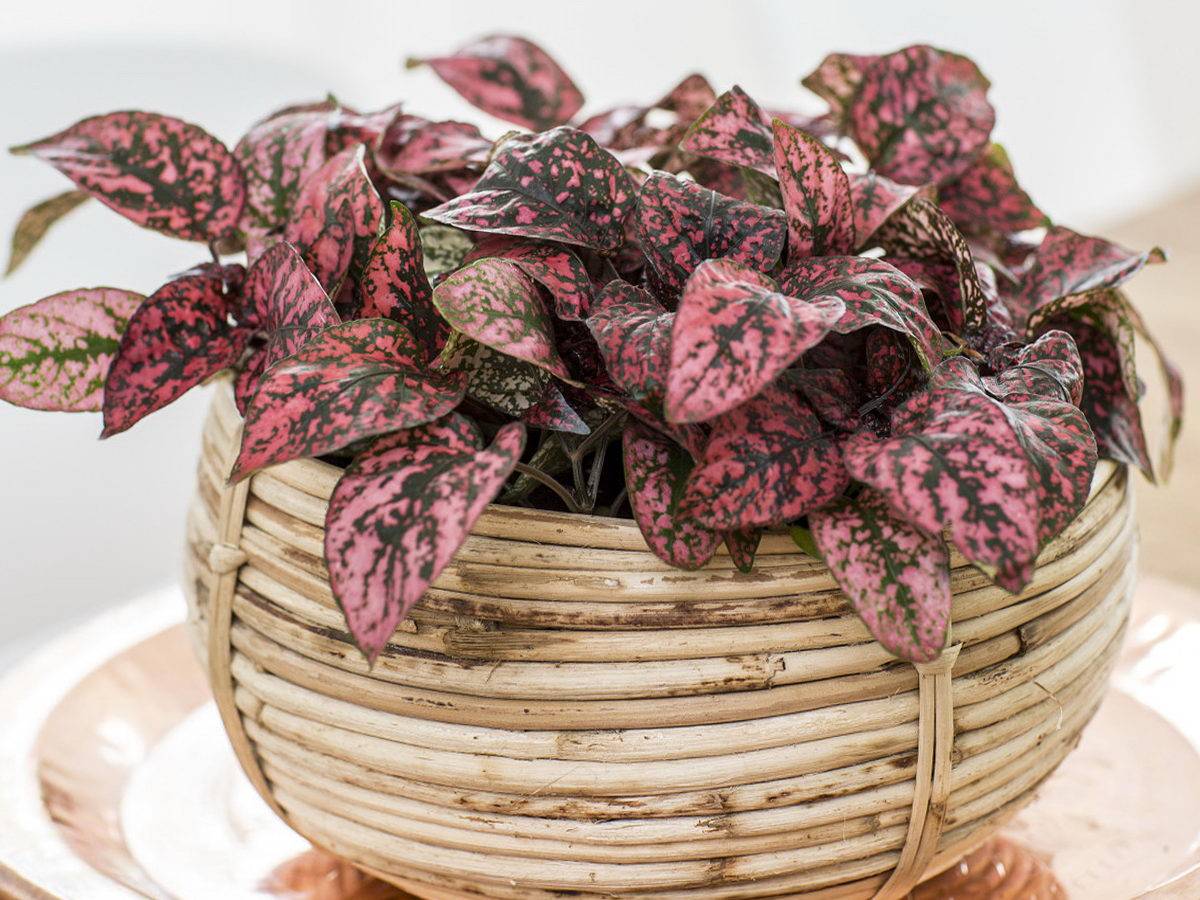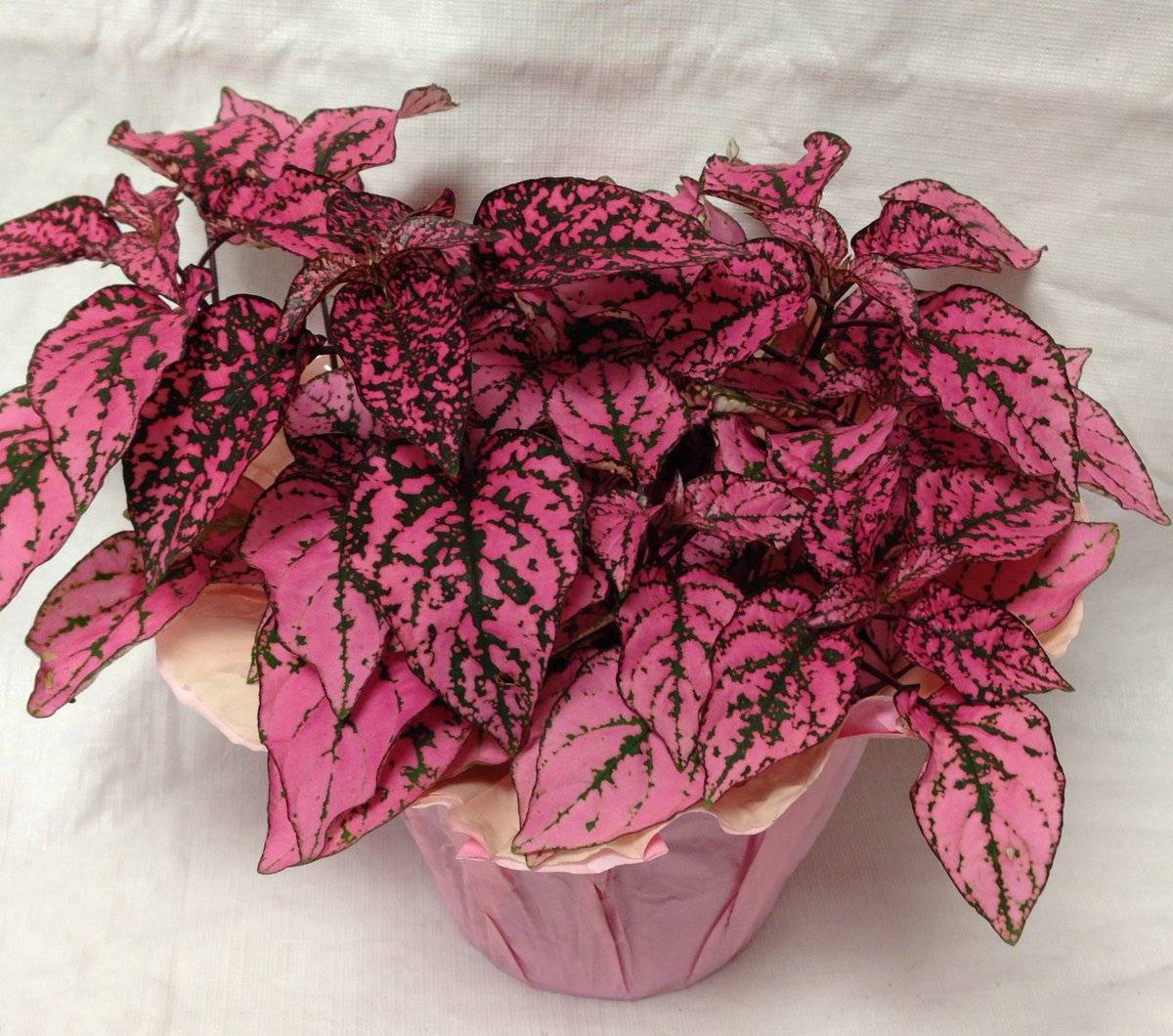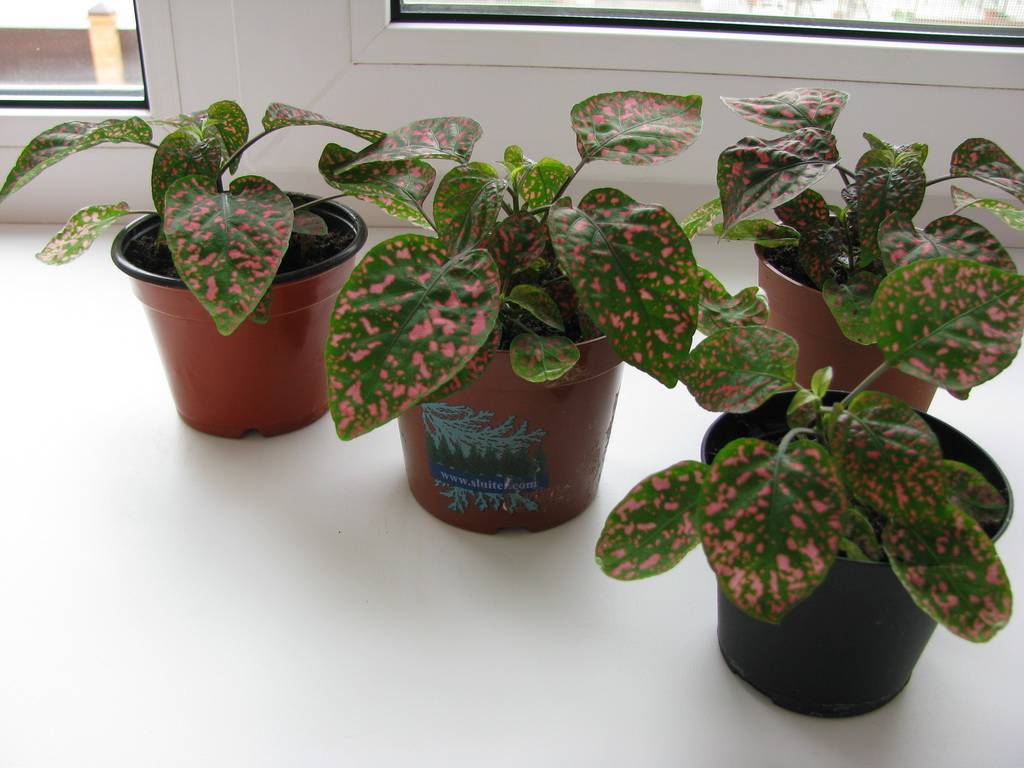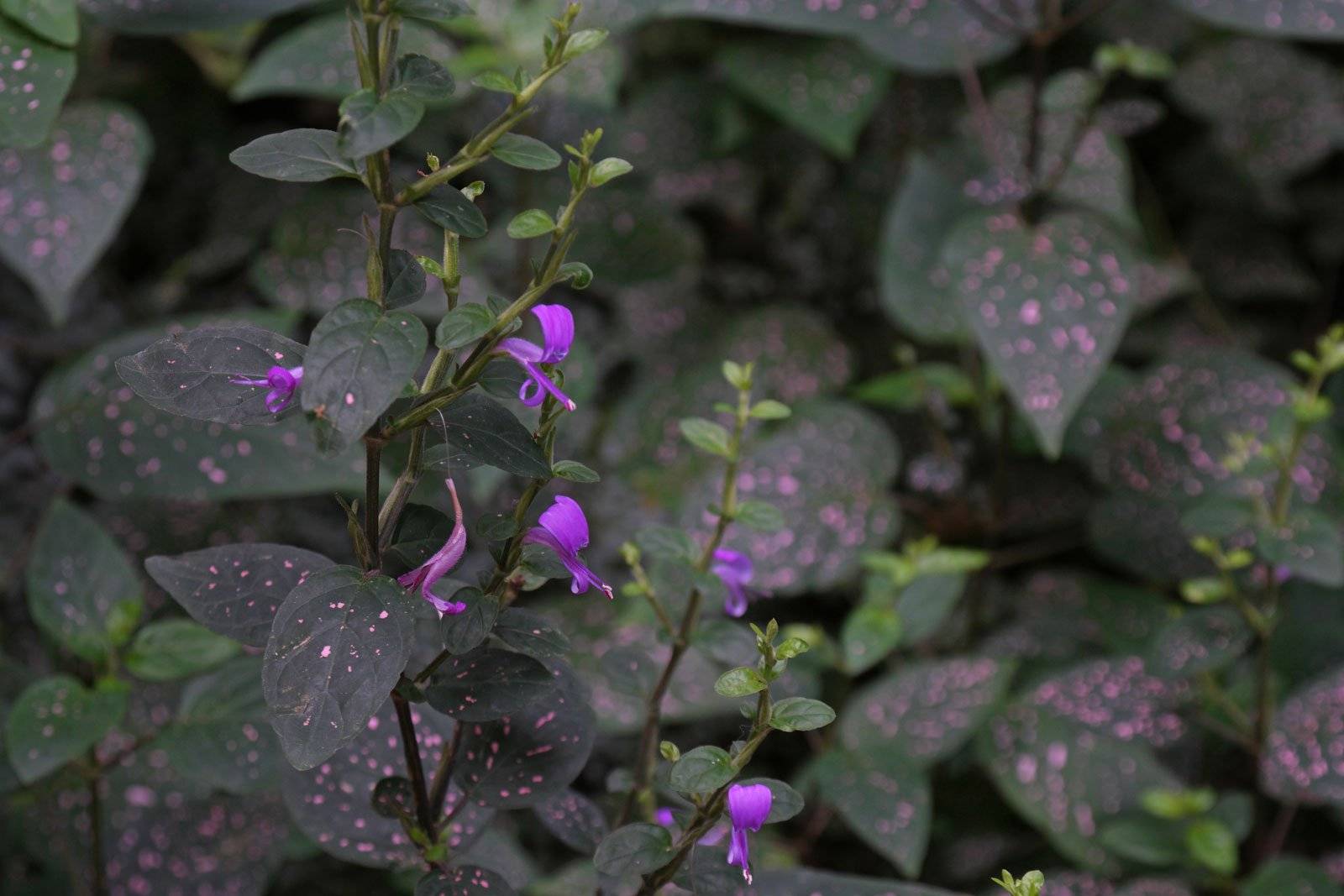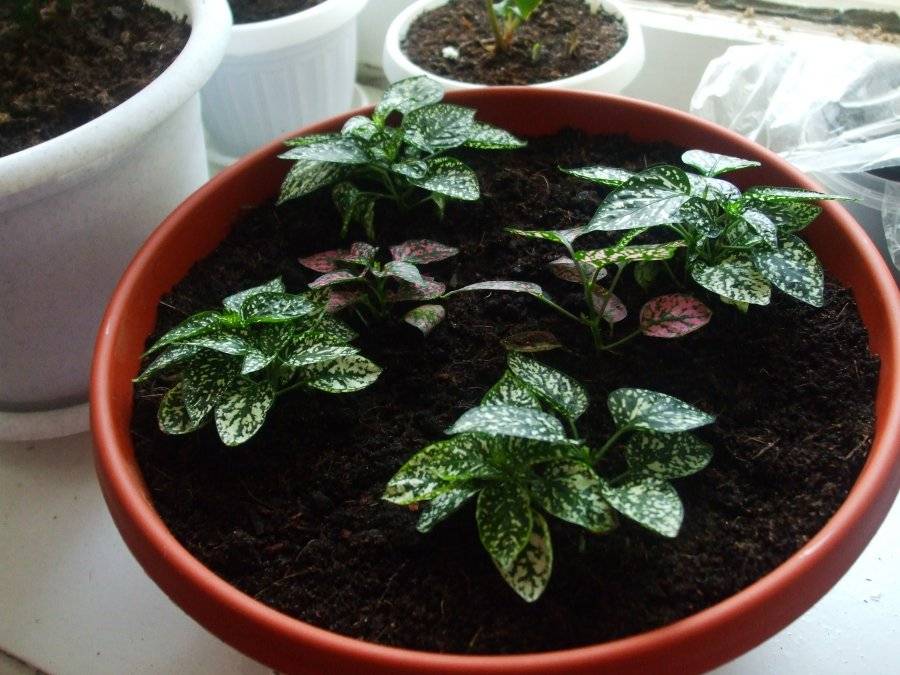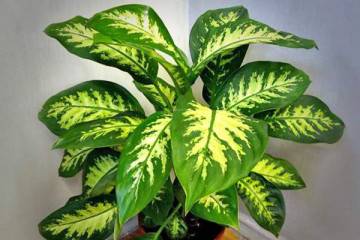Hypoestes flower - home care
Content:
A resident of Africa and Madagascar, Hypoeste is very popular with flower growers. They like to grow it at home or in the garden because of the unusual color of the leaves - they can be burgundy, pink, purple with small specks or green veins. Due to its striking appearance, it is often used in decorating houses, balconies and verandas. Although the flower is not too whimsical, it must be properly cared for.
Hypoesthesia flower - appearance, common varieties
This plant belongs to the Acanthus family. In its natural habitat, it grows to huge shrubs. The greatest branching is observed during the growing season. Ovoid leaves densely cover the entire surface of the stems. Their appearance can be varied.
The flowering of the bush is rather unusual. Thanks to the perianth, a valve is formed, in which 1-3 buds bloom. However, due to the bright coloring of the leaf plates, flowering can sometimes be simply unnoticed.
In hypoesthesia, the shoots are always erect, in Fittonia they will creep along the ground without regular pruning. But the easiest way to distinguish them is by the color of the leaves - in Fittonia, only the veins have a decorative appearance, and not the entire surface of the plate.
The member of the Acanthus family has many different varieties. Most varieties of hypoesthesia can be grown both outdoors and in pots. For this, the most common varieties are used:
- Hypoestes leaf grate or leaf spikelet (Phylostach)
Feels great at home. For the large number of specks on the leaves, gardeners call him "freckled face".
The decorative look is complemented by an unusual purple-red foliage tint.
- Hypoestes Mix
This species includes several varieties: white, crimson, red-crimson and the most common, Hypoestes Red. In this plant, leaf plates can have a different shade.
Mix is characterized by hard stems and pronounced veins. The foliage can be up to 10 cm in length.
- Hypoestes pink or watercolor drops
Named so for the unusual pattern on the sheet plates, as if drops of paint fell on them. This representative of its species is fast-growing. However, it rarely reaches a height of more than 20 cm and therefore is often grown in apartments.
Hypoestes - home care
Despite the sufficient unpretentiousness for the plant to grow normally, it is necessary to adhere to the basic recommendations for cultivation and care.
Temperature
In summer, the flower feels comfortable at temperatures from +20 to + 25 ° С. These conditions are optimal for normal growth and bud formation of the plant.
In winter, he needs to ensure the temperature is not lower than + 18 ° C.
Lighting
A flower needs good lighting for full development.In this case, it is sufficient to provide either the diffused effect of the sun or the effect of direct sunlight.
If the conditions match the wishes of the plant, then the leaves will have a bright color. It is best to place the flower on the west or east side of the house.
Watering
Watering is an important part of proper flower care. It is necessary to moisten it as soon as the soil begins to dry out. Closer to cold weather, the amount of watering is reduced.
Spraying and moisture
Hypoestes is very fond of additional moisture, so you can spray it with a spray bottle every day.
He also needs sufficient humidity in the room - it is necessary to maintain a level of 70-80%. If the air becomes dry, then additional spraying of the bush will just help.
Soil and dressing
When planted in open ground, hypoesthesia develops normally, but when grown in a pot, it needs to prepare a special substrate. For this, river sand, peat, leaf soil, compost are taken and mixed in equal proportions.
Despite its unpretentiousness, the plant loves feeding very much - they should be performed throughout the year. In summer, this is done once every two weeks; in winter, it is enough to feed the bush once a month. For this, universal fertilizers are used.
When choosing dressings, you should avoid those that contain a large amount of nitrogen - this is fraught with the fact that the leaves will begin to fade.
Features of care in winter and during rest
With the onset of frost, the plant goes into a dormant state. At the same time, any additional requirements for his care are not needed. It is enough to reduce the frequency of watering, to ensure the plant is free of drafts and low temperatures.
Also, you can not put a flower next to batteries or other heating devices. In winter, the room temperature should be no more than + 20 ° C.
When and how hypoesthes blooms
The flowering of hypoesthesia begins in June and ends with the onset of winter. At the same time, the buds bloom abundantly and often.
Experienced flower growers, due to the fact that the flowering of the plant itself is not a particularly important and vivid spectacle, most often pinch hypoestes as soon as the first flowers appear. This is done so that excess strength is not taken away from the bush.
Pruning
Pruning the plant without the need is not recommended. This procedure is performed while controlling the flowering and before the beginning of the dormant period.
This removes dried and diseased areas. The bush itself develops beautifully, so decorative processing is not required for it.
You should pinch the shoots of the plant several times a year. This is done when the plant grows in height by more than 40 cm. After the procedure, the bush begins to actively grow to the sides and takes on a beautiful decorative look.
Reproduction of hypoesthesia
At home, the plant propagates in two ways: by seed and cuttings.
Cuttings
Quite a popular way to reproduce a flower. It is performed in the following sequence:
- In the spring, suitable cuttings are cut with a length of 7 to 10 cm.
- Placed in a container with water.
- After a day, the cuttings are transplanted into opaque pots and covered with foil.
- As soon as the first roots appear in the seedlings, they are transplanted into separate containers.
Seed propagation
This method, due to its simplicity, is practiced by all experienced gardeners. In order for the seedlings to germinate, they need to be planted as follows:
- Prepare the pot and cover with moistened soil.
- Plant seeds and sprinkle with earth.
- Cover the container with transparent foil and leave until the first shoots appear.
- Remove the film and after a few days transplant the seedlings into separate containers.
- When young shoots have reached a height of 15 cm, they are pinched to stimulate the growth of side branches.
Transfer
It is advisable to transplant a plant in the spring. This procedure should not be performed frequently. It is enough to replace the old plant with a young one every three years, since it ceases to bloom actively, the leaves grow less often, and the bush itself stretches upward. It is recommended to choose a pot for transplanting wide, but not very deep.
Pests and diseases
Hypoestes is practically unaffected by pests. They can be completely avoided with preventive insecticide treatment.
All major problems and diseases are usually associated with improper plant care:
- with insufficient humidity and lighting, the leaves wrinkle;
- if the room is too cold, sudden temperature changes occur, then the bush may begin to shed foliage;
- with insufficient humidity in the room, the tips of the leaves can dry out and wither;
- if the plant is watered excessively (especially in the winter season), then the leaves turn yellow and begin to fall off;
- when the plant lacks sunlight, spots disappear on its leaves, and it itself begins to grow upward;
- if you plant a bush in soil containing a lot of nitrogen, then spots and veins will turn white on the foliage;
- in case of sunburn, the affected areas are covered with brown spots.
Signs
Hypoestes is not only a beautiful ornamental plant, but also a source of various signs and superstitions. It is believed that a flower at home can improve mood and affect the psychological climate. Such a plant is recommended for artists, artists and other creative people, as it encourages creativity. There is an opinion that even people far from the sphere of culture and art next to this flower are able to write poetry or a song.
Thus, starting to grow hypoestes at home, you can get not only an unusual plant with bright foliage, but also find a flower that can instill a love of creativity and art.
